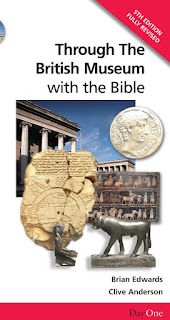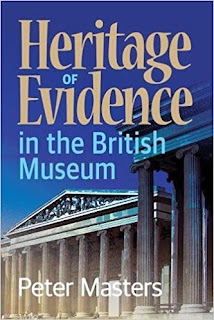(Post by A.D. Riddle)
Eisenbrauns is about to release, or has just released, two new books. They arrive just in time to add to your July reading list, if you are so inclined.
The first book is a collection of essays published upon the retirement last year of James K. Hoffmeier. Hoffmeier was Professor of Old Testament and Ancient Near Eastern History and Archaeology at Trinity Evangelical Divinity School. “An Excellent Fortress for His Armies, a Refuge for the People”: Egyptological, Archaeological, and Biblical Studies in Honor of James K. Hoffmeier is edited by Richard E. Averbeck and K. Lawson Younger Jr. I believe the photograph on the cover may have been excavated from our own BiblePlaces.com’s archives. It shows the Jebel Barkal stela of Thutmose III. (Daniel Wright had a little fun with the cover design on Facebook.) Below is the table of contents. I see several interesting essays that I look forward to reading.
Chap. 1. The Tests of a Prophet (Richard E. Averbeck)
Chap. 2. Fishing for Fissures: The Literary Unity of the Kadesh Poem of Ramesses II and Its Implications for the Diachronic Study of the Hebrew Bible (Joshua Berman)
Chap. 3. Food for the Forces: An Investigation of Military Subsistence Strategies in New Kingdom Border Regions (Louise Bertini and Salima Ikram)
Chap. 4. Left Behind: New Kingdom Specialists at the End of Egyptian Empire and the Emergence of Israelite Scribalism (Aaron A. Burke)
Chap. 5. The Ficus Judaicus and the New Testament (Thomas W. Davis)
Chap. 6. Gifts of the Nile: Materials That Shaped the Early Egyptian Burial Tradition (Joanna Dębowska- Ludwin and Karolina Rosińska- Balik)
Chap. 7. Computer Analytics in Chronology Testing and Its Implications for the Date of the Exodus (David A. Falk)
Chap. 8. Uniting the World: Achaemenid Empire Lists and the Construction of Royal Ideology (Deirdre N. Fulton and Kaz Hayashi)
Chap. 9. Geophysical Research in Pelusium: On the Benefits of Using the Resistivity Profiling Method (Tomasz Herbich)
Chap. 10. The Genealogies of Genesis 5 and 11 and Comparative Studies: Evidence for a Seam (Richard S. Hess)
Chap. 11. Sety I’s Military Relief at Karnak and the Eastern Gate of Egypt: A Brief Reassessment (Hesham M. Hussein)
Chap. 12. Maʿ at in the Amarna Period: Historiography, Egyptology, and the Reforms of Akhenaten (Mark D. Janzen)
Chap. 13. “I Have Made Every Person Like His Fellow” (Jens Bruun Kofoed)
Chap. 14. The Founding of the Temple in Ancient Egypt: Ritual and Symbolism (Ash Melika)
Chap. 15. Goliath’s Head Wound and the Edwin Smith Papyrus (Edmund S. Meltzer)
Chap. 16. Did the Patriarchs Meet Philistines? (Alan Millard)
Chap. 17. Writing Trauma: Ipuwer and the Curation of Cultural Memory (Ellen Morris)
Chap. 18. Old Kingdom Exotica at Pharaoh’s Court and Beyond: Dwarfs, Pygmies, Primates, Dogs, and Leopards (Gregory Mumford)
Chap. 19. Judges 10:11: A Memory of Merenptah’s Campaign in Transjordan (Steven Ortiz and S. Cameron Coyle)
Chap. 20. Digging for Data: A Practical Critique of Digital Archaeology (Miller C. Prosser)
Chap. 21. Debriefing Enemy Combatants in Ancient Egypt (Donald B. Redford)
Chap. 22. Israelite Origins (Gary A. Rendsburg)
Chap. 23. The Egyptian Background of the Joseph Story: Selected Issues Revisited (Nili Shupak)
Chap. 24. Mighty Bull Appearing in Napata: Memorialization and Adaptation of the Bronze Age into the Iron Age World of the Kushite, Twenty- fifth Dynasty of Egypt (Stuart Tyson Smith)
Chap. 25. Hosea 1–3 as the Key to the Literary Structure and Message of the Book (Eric J. Tully)
Chap. 26. The Egyptian Fortress Commander: A Career Check Based on Selected Middle and New Kingdom Examples (Carola Vogel)
Chap. 27. Mud- bricks as a Dating Tool in Egyptian Archaeology (Kei Yamamoto and Pearce Paul Creasman)
Chap. 28. The God ʾ El of Ramesses II’s Stela from Sheikh Saʿ d (the “Job Stone”) (K. Lawson Younger Jr.)
The second book coming from Eisenbrauns is New Directions in the Study of Ancient Geography, edited by Duane W. Roller. The table of contents did not give me a good indication for what to expect from this volume, but I was helped by the publisher’s description.
This volume brings together five essays that represent the latest directions in the study of geography in classical antiquity. Arranged chronologically, these contributions cover several centuries and cultures, ranging from ancient Mesopotamia to the Roman Empire and deal with topics such as ancient cosmology, literary interpretations of geography, ancient navigation, and geography in the Roman Imperial world.
Beginning in the ancient Near East, Paul T. Keyser’s essay considers how Greek scholars—whose views on the cosmos are still relevant today—were influenced by early Near Eastern beliefs about the universe.Moving to the Hellenistic period, Duane W. Roller presents and provides commentary on a navigational guide for Ptolemaic seamen written by Ptolemy II’s chief of naval staff, Timosthenes of Rhodes. Georgia L. Irby provides an analysis of a literary map—the Shield of Aeneas from Vergil’s Aeneid—as well as a detailed study of Pomponius Mela and his Chorographia, the earliest surviving Greco-Roman geographical treatise and the only extant independent geographical work in Latin. An essay by Molly Ayn Jones-Lewis completes the volume by describing how Tacitus’s Germania, of the early second century AD, is a work heavily reliant on environmental determinism, an issue that is still relevant today.
Together, these essays demonstrate the great diversity of both ancient geographical writing and modern scholarship on ancient geography. This volume will be greeted with enthusiasm by ancient historians and classical studies scholars, particularly those interested in the cultural and political facets of geography.
I remember the good ol’ days when Eisenbrauns’ vision was to make more affordable for the ANE student these kinds of specialized academic works. It seems we have to kiss those days goodbye. Both of these titles are listed for $99.95. You will find occasional opportunities, however, where the prices are discounted. On their Facebook page announcing the Hoffmeier Festschrift, Eisenbrauns invites people to “Sign up to find out when it publishes and receive 40% off!” I am not sure where or how you sign up.
HT: Mike Mason



